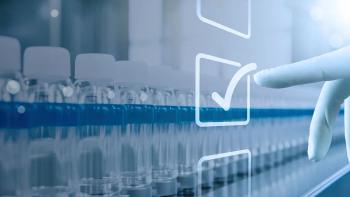
- BioPharm International-07-01-2007
- Volume 20
- Issue 7
From the Editor: Learning from the Diethylene Glycol Tragedies
Quality guidelines are only as good as their implementation.
A decade ago, 88 children died in Haiti when a contaminated excipient was used in an acetaminophin syrup. What was labeled as pharmaceutical-grade glycerin turned out to be contaminated with diethylene glycol, a toxic chemical used in antifreeze with a chemical profile similar to that of glycerin. The excipient had been mislabeled in China, where it was produced, and after it passed through several hands in Europe, the ultimate pharmaceutical manufacturer never checked its composition or traced it all the way back to its source.
Laura Bush
When I first heard about this several years ago, it seemed part of a distant past, a horror story that had, sadly, taught the industry hard lessons about treating excipients with the same care as any active pharmaceutical ingredient. But the problem has not gone away. Last year, an outbreak of diethylene glycol poisoning in Panama resulted in at least 100 deaths. And just last month, this ingredient was found in Chinese-made toothpaste used in US hospitals. Although the latter case was not about pharmaceuticals, it's one more reminder that this toxic ingredient is lurking where we least expect it.
In today's increasingly global biopharmaceutical industry, where manufacturers look worldwide to save costs, and particularly as China emerges as an up-and-comer, we should take note. The Chinese government's responses to these cases has ranged from obstructive to inadequate.
Ensuring the quality of pharmaceutical excipients always has been challenging. For a long time, there were no clear guidelines on how to apply good manufacturing practices (GMPS) to excipient production or how to audit excipient manufacturers.
Over the last decade, however, the International Pharmaceutical Excipients Council has issued a series of guidelines on topics such as GMPs for excipient manufacture, conducting supplier audits, and implementing good distribution practices for tracking materials throughout the supply chain. They have also set up a program to help small-volume buyers obtain independent audits at lower costs. The US Food and Drug Administration has also issued a new guidance in May reminding users to test every container—not just every lot—of glycerin.
But all of these recommendations are only as good as their implementation. As the FDA points out in its new guidance, the Haiti and Panama cases reveal similarities: 1) The pharmaceutical manufacturers did not perform full identity tests on the glycerin they used; 2) The pharmaceutical manufacturers relied on the certificate of analysis (COA) provided by the supplier; and 3) The origin of the glycerin had been obscured by the distributor to prevent the buyer from going around the distributor.
We may think that the US is not prone to the risks that poor countries like Haiti and Panama are, but keep in mind the excipients in the Haiti case passed through a European distributor. And yes, glycerin may be an excipient used in small-molecule drugs, but that doesn't mean biotech is immune from risk to the sugars and other ingredients used to stabilize proteins. Let us all be wary.
Laura Bush is the editor in chief of BioPharm International,
Articles in this issue
over 18 years ago
Final Word: Are Biotechnology Meetings and Symposia Doing the Job?over 18 years ago
Street Talk: Cautious Optimism: the Watchwords for Volatile Sectorover 18 years ago
Outsourcing Insights: Why European CMOs Are Coming to Americaover 18 years ago
China Today: Next Steps Toward Globalizationover 18 years ago
Manufacturers Tackle Neglected DiseasesNewsletter
Stay at the forefront of biopharmaceutical innovation—subscribe to BioPharm International for expert insights on drug development, manufacturing, compliance, and more.




